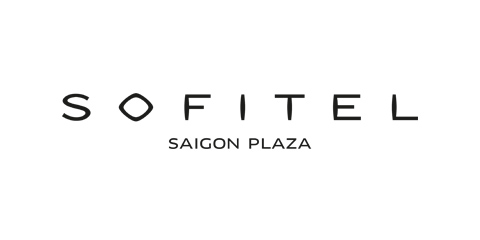Want to be in the loop?
subscribe to
our notification
Business News
“SIGNIFICANTLY LOWER” PORT CHARGES SET TO RISE
International shipping lines could face a 10 per cent increase in container handling service charges at ports in the northern region, starting from early 2019 under the Ministry of Transport’s latest proposals. However, many concerns over the possible logistics cost hikes have been raised. Bich Thuy reports.
Entering the Vietnamese market in 2008, Mayekawa - Japan’s leading manufacturer of compressors and solutions for industrial refrigeration and food processing - is today looking to expand business operations in the country. However, like other Japanese logistics firms, Mayekawa is expecting local authorities to take measures to cut distribution costs to facilitate its activities.
Ryoichi Ichino at Japan’s Ministry of Land, Infrastructure, Transport and Tourism (MLIT) said that the collection of infrastructure fees at port border gates and time-wasting customs procedures are the bottlenecks hindering the improvements of logistics service efficiency in Vietnam.
NEW CHARGE HIKES IN PIPELINE
Vietnam’s Ministry of Transport (MoT) last week collected reports from relevant government agencies, logistics businesses and port operators for the latest draft circular, focusing on a 10 per cent rise in container handling service charges at ports in Area I, which include ports in the northern localities of Quang Ninh, Haiphong, Thai Binh, and Nam Dinh.
“The rise is aimed at helping port operators have more money to increase service quality by applying advanced technology and upgrading infrastructure,” said Deputy Transport Minister Nguyen Van Cong. “Moreover, the move is part of our efforts to put charges on a par with the regional level. Currently, this charge in Vietnam is significantly lower than that applied in Cambodia ($65), Thailand ($59), Malaysia ($75), the Philippines ($98), Indonesia ($81), Singapore ($111), Myanmar ($165) and China ($97).”
As regulated in Decision No.3863/QD/BGTVT issued by the MoT on December 1, 2016, the container handling service charge is currently just $30 for ports in Haiphong, $45 for ports in the central city of Danang and $41 for ports in Ho Chi Minh City.
Under the draft circular, which is expected to take effect on January 1, 2019, and replace Decision 3863, there are two schemes for the rise.
Under the first scheme, the container handling service for exports, imports and temporary import for re-exports (not applied for Lach Huyen Deep Seaport) will be charged $33 at minimum and $53 at maximum for a full 20-foot container. For a full container over 40 feet, the minimal charge will be $58 and the maximum charge will be $98, while respective rates for a 40-foot full container are $50 and $81. In regards to Lach Huyen Deep Seaport, the container handling service for exports, imports and temporary import for re-exports applied will be charged $46 at minimum and $60 at maximum for a 20-foot full container.
For a full container of over 40 feet, the minimal charge will be $75 and the maximum charge is $98, while the rates will be $68 and $88 for a 40-foot full container, respectively.
Meanwhile, under the second scheme, the container handling service charge will be raised under a roadmap from 2019 to 2021. In particular, the full 20-foot container handling service charge for exports, imports and temporary import for re-exports (not applied for Lach Huyen Deep Seaport) will be $33 in 2019, $37 in 2020 and $41 in 2021 at minimum and $53 at maximum.
The thresholds for a full 40-foot container will be at minimum $50 in 2019, $56 in 2020 and $62 in 2021 and $81 at maximum, while for a full container of over 40 feet, the minimal respective rates will be $60, $68 and $75 and the maximal rate is $98.
The container handling service for exports, imports and temporary import for re-exports applied for Lach Huyen Deep Seaport will be charged at $46 in 2019-2020 and $52 in 2021 at minimum and $60 at maximum for a 20-foot full container. The thresholds will be $68 in 2019-2020 and $77 in 2021 at minimum and $88 in maximum for a 40-foot full container. For a full container of over 40 feet, the minimal respective rates will be $75 in 2019-2020 and $85 in 2021, while the maximal rates will be $98. The rise proposals were strongly supported by port operators and logistics firms, who are the main beneficiaries, including the Vietnam Logistics Business Association, which represents the voice of 370 domestic and foreign-invested logistics companies, the Vietnam Maritime Administration, Danang Port JSC, Haiphong Port JSC, Haiphong International Container Terminal Company Limited (HICT) and many others.
“Since becoming operational in May this year, HICT still faces difficulties in attracting clients. Thus, we support the second scheme which increases the charge for Lach Huyen deep seaport under a roadmap,” said a HICT senior official.
FEARS OF LOGISTICS COST HIKE: GAINS AND LOSSES?
While port operators voiced their agreement with this charge increase, Vietnam Shippers’ Council (VNSC), which has around 20 members, raised its concerns over the possible increase in logistics costs when this kind of charge is introduced.
“When the container handling service charge is increased at a low or high rate, the logistics cost will go up accordingly. Foreign shipping lines, which are a subject directly affected by the hike proposal, will then raise fees and surcharges on shippers,” said Phan Thong, general secretary of VNSC. “We need to control the current charges that foreign shipping lines are applying when the circular takes effect, or they will take the opportunity to enforce the increase.”
“The MoT should make careful considerations to minimise the possible impacts on the subjects affected by the proposal,” Thong suggested.
To ease concerns, MoT Deputy Minister Cong said that this adjustment would not directly affect Vietnamese shippers and the consumer price index as ports will collect the charge directly from foreign shipping lines.
“The increase is modest compared to the terminal handling charge (THC) that foreign shipping lines collect from Vietnamese shippers. At present, the THC is $100 per 20-foot container and $150 per 40-foot container, while ports can collect just $46 per 20-foot container, and $68 per 40-foot container from international shipping lines for the container handling service charge.”
“The container handling service charge at ports makes up a small part of the total logistics cost. Thus, if the container handling service charge at ports is raised by 10 per cent, meaning just 3 per cent of the THC, it is unlikely that international shipping lines will increase the THC for fears of losing customers,” he added.
At present, Haiphong is the most developed port area in the northern region. The city has 13 port operators with a total of 26 piers having an annual capacity of 500-800 twenty-foot equivalent units (TEU). However, the container handling service charge in Area I is lower than that of Area II in the central region and Area III in the southern region.
Coming back to July 1, 2017 when Decision 3863 began to take effect, international shipping lines forced ports in Haiphong to apply the charge at $30 per 20-foot container, thus reducing revenues of local ports. For example, Dinh Vu Port reported a fall of VND30 billion ($1.33 million) in revenue, and Haiphong port saw a drop of $5 million in the second half of 2017.
“Any charge increases would cause an impact on businesses. And we should consider losses and gains. In this case, gains are higher than losses. Based on the analysis, it’s reasonable to increase this charge,” Nguyen Tuong, senior consultant of the Vietnam Logistics Business Association, told VIR.
The MoT estimated that with a projected cargo volume of 4.2 million TEU in 2019, the increase in the container handling service charge would help ports in Haiphong to receive an additional amount of at least VND280 billion ($12.34 million), thus contributing an additional VND60 billion ($2.65 million) in corporate income tax to the state budget, while having more financial sources for investing in infrastructure and advanced technology to increase their service quality.
The projection is bright as according to the latest study on the logistics industry from Stockplus, prospects for improvements in cargo transportation through Haiphong Port are positive due to its strategic location. It also cites improved infrastructure; operations of giant multi-national corporations such as Samsung, LG Electronics Vietnam, Bridgestone and Shin Etsu among others; and more companies establishing production facilities thanks to investment incentives mainly in tax and land rental. The increase proposals are being made amid the country’s bold actions to cut logistics costs, and whether it causes actual impacts on Vietnamese shippers and foreign logistics service providers like Mayekawa remains a question.
Source: VIR
Related News

A STELLAR CHRISTMAS AT SOFITEL SAIGON PLAZA
Experience the magic of year-end celebrations in five-star luxury, where Parisian elegance meets Saigon’s festive vibrancy. Discover your Stellar Christmas moments: https://sofitel-saigon-plaza.com/festive-offer-2025

CONSTRUCTION SECTOR POSTS OVER 9% GROWTH IN 2025
Industries under the ministry’s management accounted for an estimated 17.23% of national gross domestic product (GDP), up about 0.17 percentage point from 2024. They contributed around 1.96 percentage points to overall GDP growth, reported the Vietnam News Agency. The contribution helped push Vietnam’s economic growth to above 8% in 2025 and supports the Government’s aim of pursuing double-digit growth in the coming years.

VIETNAM PUTS PUBLIC INVESTMENT DISBURSEMENTS AT VND603.6 TRILLION
Vietnam’s public investment disbursements had amounted to VND603.6 trillion in the year to December 18, equivalent to 66.1% of the plan assigned by the prime minister. According to the Ministry of Finance, actual disbursements by December 11 had totaled VND577.7 trillion, or 63.3% of the prime minister-approved plan of VND913.2 trillion, the Vietnam News Agency reported.

SHINE INTO 2026 AT HOIANA RESORT & GOLF!
This New Year’s Eve, celebrate where the sea meets the sky. Vibrant performances, festive dining, DJ beats, live bands and dazzling fireworks come together for one unforgettable night. From beachfront countdown moments to curated New Year’s Eve dinners across Hoiana, every detail is designed to welcome 2026 in style.

VIETNAM’S TRADE SET TO SURPASS US$900 BILLION FOR FIRST TIME
Vietnam’s total import-export turnover is expected to reach about US$920 billion by the end of the year, marking the first time the country’s trade value has exceeded the US$900-billion mark. As of December 15, Vietnam’s total trade turnover stood at US$883.7 billion, according to the Agency of Foreign Trade under the Ministry of Industry and Trade.

GLOBAL SOURCING FAIR VIETNAM 2026 – THE TRULY GLOBAL B2B SOURCING SHOW IN VIETNAM TO EXPAND & DIVERSIFY YOUR EXPORT MARKETS WORLDWIDE
The 4th edition of Global Sourcing Fair Vietnam returns in 2026 with an impressive scale, featuring 700 booths showcasing Fashion & Accessories, Home & Gifts, and the newly introduced Printing & Packaging Products from 500+ verified suppliers across Vietnam and Asia – including Mainland China, Taiwan, Hong Kong SAR, South Korea, India, Bangladesh, ASEAN, and more.
























